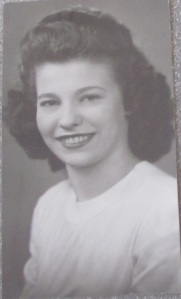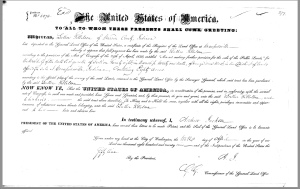Many researchers bemoan the concept of a “reasonably exhaustive search” as being to difficult, because they don’t know what qualifies as reasonable. How do they know when they have researched deep enough or widely enough to call it good. The simple answer for me is starting with a good question. The more complicated the questions the more complicated the answer is. Asking a simple question like “Who are Allen Stultz’s parents?” can prove to have an extremely complicated answer. In this case, I have been trying to prove his parents for many years. A survey of the on line trees available show that many people have an opinion about who are his parents are but no one seems to know why. I have received responses to query’s about why they listed so and so as his parents, “It was stated on another on line tree”, or “I have no idea”. When I have a situation like that, I don’t list any father for the person. Tis better by far to leave it blank than to list someone with no documentation to back up the claim. I wish that others would do the same. I do however, have a tree on Ancestry.com that lists the possibilities. I do this so that ancestry can search for clues for me.
When I begin a research query it begins with a good question as narrow as I can make it. I do this because as I collect documents along the way, more questions are usually brought to my attention that will require further research. To record the information that I find, I use an excel spread sheet to track the person life. I also use Rootsmagic (although not as much any more) to “file” the documents by person. I have found since taking Thomas W. Jones class at SlIG that I prefer to use word and excel to track the information. This way I can write the story as I find it rather than after the fact. I find that it helps me to record the details better and shows me where I need to do further research. The very act of writing the story forces me to more closely exam what I know.
I took a class by Elizabeth Shown Mills at NGS this year. In her handout she detailed not only the documents that she found but the physical description as well. Having all the information in a word document helps me to easily identify if I am on the right track or have maybe veered off the family tree to another branch. Also, her concept of FANs has helped me to see the family in concept of a family and part of community not just names and dates on a piece of paper.
At NGS, I also came upon a new website called ResearchTies.com which is basically an online spreadsheet that allows you access anywhere you have internet access but it has tools that help you form the questions you are asking and plan your research. It’s an interesting concept I plan to explore further.
To me, a “reasonably exhaustive search” is on going. Although, I may draw conclusions today based on the information that I have access to, it might all change tomorrow when new information comes to light. The internet is an excellent resource for finding information on your ancestors. There is so much more information available today then there was when I first began. I appreciate all the people willing to donate their time and talents for helping to index records, thereby making them available to all of us. Some websites that are very helpful is finding information in your search are:
Familysearch is not only a great repository of records but also a wonderful learning tool. The wiki is very helpful when researching a new area, trying to learn how to use a new tool in your research or understanding how to read the census record you found on your grandparents. They have videos as well as documents. And if you would like “live” research help you can call in and receive help over the phone from those who have experience in the areas you are researching. The best part is that it is all provided free of charge. They add new records if not daily, at least weekly. They also have Facebook pages set up by states and countries where you can ask questions of the community and interact with other researchers in the area you are researching. An example of a page on facebook I follow is the Indiana Genealogy Research page. It helps me to keep up with all the changes occurring in Indiana research.
Another good resource is New England Historic Genealogical Society. It has fantastic databases that are expanding all the time. It does costs to join the society but it is well worth it. There are free databases to search but the members section is very helpful plus it provides you with a subscriptions to American Ancestors Magazine as well as The New England Historical and Genealogical Register both interesting publications that can help you further your research.
These are just two examples of the many websites available to help you in your research quests. While the internet is an excellent resource don’t underestimate the value of “boots on the ground”. Going to the places that your ancestors lived will help you get the whole picture of your ancestors life. The important thing is to do enough research first so as to not waste you time and money on your research trip.
This is just the tip of the iceberg so to speak involving the subject. I hope to explore it more as I study. I look forward to others insights and ideas. If you have internet research sites that you love please share them in the comments as well as why you love them.

